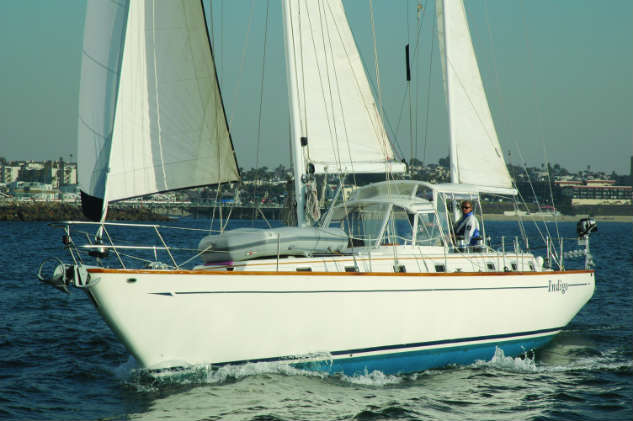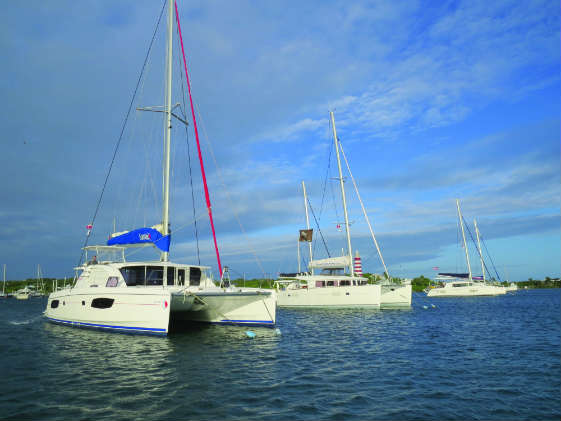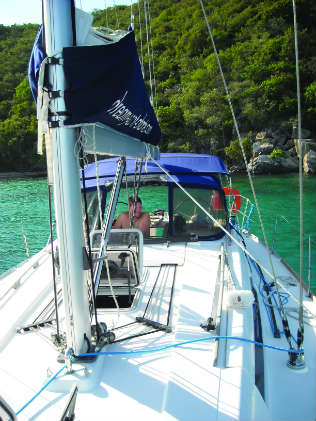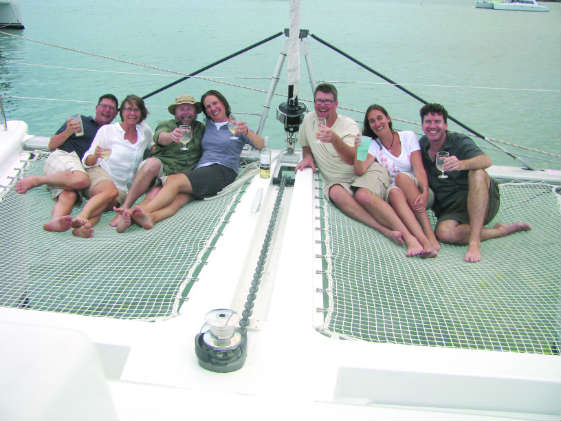Which Boat Type Is Right for Chartering?
Chartering this fall or winter and wondering what kind of boat to get? Well, that will depend on a number of factors including your experience, your crew, your budget, and even your destination. There are pros and cons to both. Let’s look at how optimizing your choices in these areas will translate to a better cruise and maybe even requests for a repeat vacation.
Your experience
Managing a catamaran or trimaran is nothing like driving a monohull in both good and bad ways. For example, because multihulls have twin screws set maybe 20 feet apart, they offer better control even at slow speeds, so it’s easier to keep stationary when waiting for the fuel dock to open or picking up a mooring. But for those not used to cats, the wide expanse of deck at the bow and typically poor visibility to at least two of the four corners may feel intimidating and a bit like docking a living room.
Off the wind, sailing on a cat is a lovely upright experience, but multihulls don’t like to go upwind and they tack with all the agility of a shoebox. No matter what the brochures say, sailing much closer than 60 degrees apparent wind angle is only in the realm of true performance cats that are typically not found in charter. If you want tight tacks and good upwind performance, a monohull will be a better bet.
On the plus side, reefing isn’t quite as time sensitive on cats as it is on monohulls. If it needs to be done, a cat provides a flatter deck for crew to work on. It’s not that you don’t reef multihulls; it’s just that they can take more before needing to shorten sail, usually about five knots of wind speed.
Finally, cats waddle, and that motion isn’t for everyone. They also pound upwind into big seas whereas monohulls will slice through waves and feel more familiar and therefore friendlier.
Your crew
If you’re planning on sailing with a big crew, especially those who may be uninitiated in the ways of chartering and sailing, a catamaran may be the answer simply for its abundance of room and enhanced safety. Cats simply have more deck space, more cockpit room, and bigger cabins. In fact, if you multiply a cat’s length times 1.25, you’ll get the approximate equivalent space of a monohull. (Example: a 40-foot cat has the room of a 50-foot monohull.) Large open cockpits provide nice outdoor social areas for small crowds, and you’ll probably enjoy better ventilation to boot. There’s also more shelter if it rains, so a catamaran is a good cold or hot weather option.
From a safety standpoint, multihulls don’t heel, and their motion is usually more family friendly with less discomfort of seasickness and fear of “tipping.” Those less mobile, such as seniors or kids, will find it easier to move about on a cat. That same stability is great at anchor because cats don’t roll, and that means a good night’s sleep. Finally, if an engine fails or you wrap a mooring line in one prop, you have another engine to get you back to the charter base in an emergency.
On the other hand, if you’re chartering only as a couple, you won’t need the extra room. Also, a mate experienced only in monohull procedures may find himself less helpful to the captain than usual. Finally, the forces on big cats are significant, and you or your crew will not be able to manhandle a multihull the way you’re used to doing with other boats.
Your budget
Multihulls are expensive. There’s definitely a premium to charter a cat of the same size as a monohull. Not only will you pay more for the boat, but also there are two engines to feed, and that will reflect in your fuel bill at the end of the charter. Also, monohulls aren’t as popular as they once were, so there are more discounts on them than on cats. When not chartering with a crowd (that can split the costs), a monohull will be a better bargain.
Your destination
Where you choose to sail will have a lot to do with what kind of boat to charter. The first reason is simply availability. Caribbean and South Pacific charter bases are positively packed with cats, so there are more to choose from. However, if chartering in the Pacific Northwest or in Europe, you’ll find very few cats and they will be crazy expensive. Also, Europeans normally Med moor at city docks; squeezing a cat into a line of tied up boats in Croatia or Greece isn’t for the faint of heart. This is changing somewhat as cats grow in popularity, but it’s still not easy or cheap to charter a cat in some parts of the world.
Consider also the difference in draft. Skinny water cruising as in the Grenadines or Tahiti can be tricky with a deep draft boat, and cats have the advantage there. Every foot below the waterline that you save is more of the world to explore.
How many hulls?
No two charters are alike, so making careful choices will make all the difference in your experience. Once you decide on the right number of hulls, the rest is easy peasy. ~By Zuzana Prochazka
This is the third in our four-part 2018 multihull series.
Find part one of our multihull series here.








